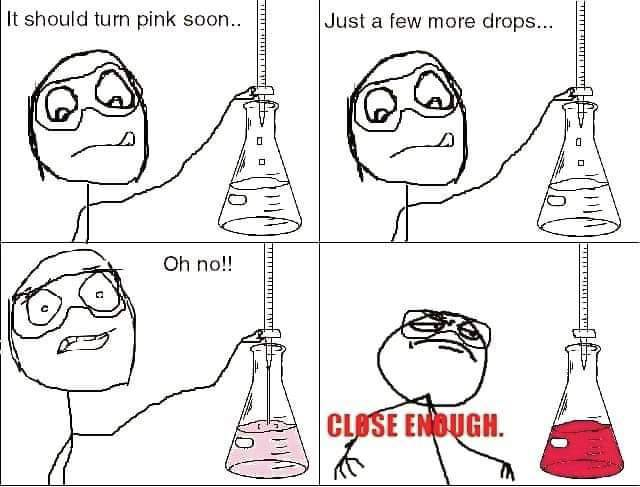this post was submitted on 06 Feb 2025
377 points (96.1% liked)
Science Memes
13251 readers
3048 users here now
Welcome to c/science_memes @ Mander.xyz!
A place for majestic STEMLORD peacocking, as well as memes about the realities of working in a lab.

Rules
- Don't throw mud. Behave like an intellectual and remember the human.
- Keep it rooted (on topic).
- No spam.
- Infographics welcome, get schooled.
This is a science community. We use the Dawkins definition of meme.
Research Committee
Other Mander Communities
Science and Research
Biology and Life Sciences
- !abiogenesis@mander.xyz
- !animal-behavior@mander.xyz
- !anthropology@mander.xyz
- !arachnology@mander.xyz
- !balconygardening@slrpnk.net
- !biodiversity@mander.xyz
- !biology@mander.xyz
- !biophysics@mander.xyz
- !botany@mander.xyz
- !ecology@mander.xyz
- !entomology@mander.xyz
- !fermentation@mander.xyz
- !herpetology@mander.xyz
- !houseplants@mander.xyz
- !medicine@mander.xyz
- !microscopy@mander.xyz
- !mycology@mander.xyz
- !nudibranchs@mander.xyz
- !nutrition@mander.xyz
- !palaeoecology@mander.xyz
- !palaeontology@mander.xyz
- !photosynthesis@mander.xyz
- !plantid@mander.xyz
- !plants@mander.xyz
- !reptiles and amphibians@mander.xyz
Physical Sciences
- !astronomy@mander.xyz
- !chemistry@mander.xyz
- !earthscience@mander.xyz
- !geography@mander.xyz
- !geospatial@mander.xyz
- !nuclear@mander.xyz
- !physics@mander.xyz
- !quantum-computing@mander.xyz
- !spectroscopy@mander.xyz
Humanities and Social Sciences
Practical and Applied Sciences
- !exercise-and sports-science@mander.xyz
- !gardening@mander.xyz
- !self sufficiency@mander.xyz
- !soilscience@slrpnk.net
- !terrariums@mander.xyz
- !timelapse@mander.xyz
Memes
Miscellaneous
founded 2 years ago
MODERATORS
you are viewing a single comment's thread
view the rest of the comments
view the rest of the comments

Suppose you are trying to determine the concentration of a solution. You could try to boil off the water and figure out how much solid stuff is left over, but what if it's a mixture, and you just want to know how much, for instance, "Hydrochloric Acid" is in the water. Or, alternatively, some chemicals (such as Hydrochloric acid) evaporate with the water. We need a way to figure out the concentration of this chemical ( we'll call it "Chemical X") without trying to pull it out of the solution.
So, you need to know how much Chemical X is in your solution, but you can't really easily separate it from the solution. What do you do? You Titrate! You find some other chemical that reacts with Chemical X, so that this new chemical (which we will call Chemical Y) will get instantly destroyed as long as there is still more Chemical X in solution. So, as long as there is more Chemical X in solution, the Chemical Y will get eaten up instantaneously, reacting with Chemical Y.
Finally, you just need to have some way of detecting whether any Chemical Y exists in the solution, since the moment you see it in solution, you know there's no more Chemical X to eat it up.
Now, you titrate: take a specific volume of your sample solution, and add a known concentration of Chemical Y, drop by drop. Once there is any chemical Y left over, you know you have found how much Chemical X was in the solution to start. Congratulations, you now know the concentration of Chemical X in the sample solution.
Thanks, but I'm now past the point where this info is useful to me. If this came 3 years ago though...
Knowledge always has the capacity to become useful again at some point